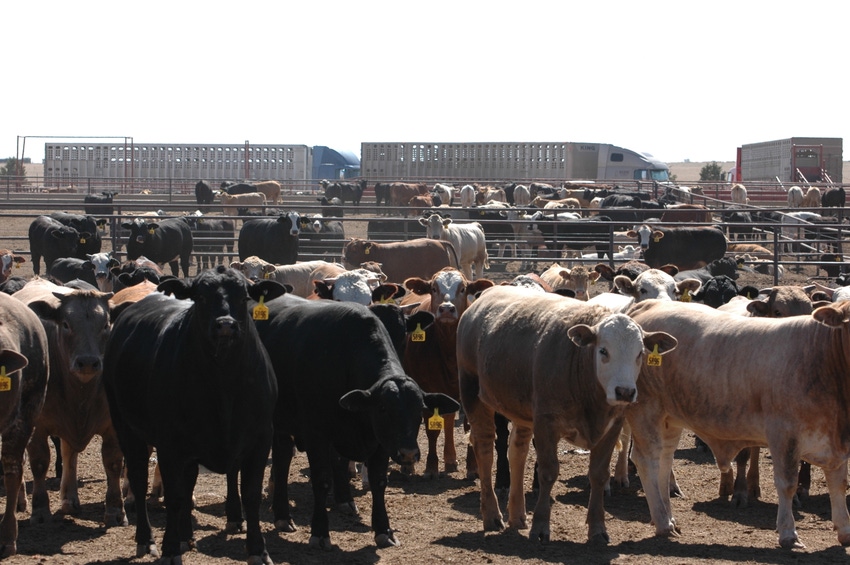Recent fed cattle cash trade matches voluntary trigger levels
A look at recent cash trade for fed cattle shows cattle feeders are generally meeting the triggers described in a recent NCBA report.
October 29, 2020

Negotiated cash fed cattle trade volume for the last quarter was in line with levels adopted in the recently released price discovery framework from the National Cattlemen’s Beef Association (NCBA).
A voluntary Framework to Achieve Robust Price Discovery in thr Fed Cattle Market outlines a path to ensure minimum levels of weekly cash trade, on a voluntary basis. It relies on what is termed robust cash trade volume for each of four regions, utilizing price discovery research from Stephen Koontz, agricultural economist at Colorado State University.
Those specific robust volume levels of trade by region are: Texas, Oklahoma and News Mexico (13,000 head); Kansas (21,000 head); Colorado and Nebraska (36,000 head); Iowa and Minnesota (16,000 head).
What follows is based on the author’s understanding of the framework, USDA data review and calculations.
In order to comply with the framework, at least 75% of the above robust trade levels must be achieved in each region, no fewer than 75% of the weeks in each quarter.
These 75% levels for each region are: Texas, Oklahoma and News Mexico (9,750 head); Kansas (15,750 head); Colorado and Nebraska (27,000 head); Iowa and Minnesota (12,000 head).
With that in mind, consider the last quarter of July through September. There were 14 weeks. Had the framework been in place, regional trade compliance would have needed to occur for at least 10 of those weeks.
Thumb through Weekly Direct Steer and Heifer Slaughter Cattle Summary reports from USDA’s Agricultural Marketing Service (USDA-AMS) and compare negotiated cash volume for each week, in each region, to the 75% levels described above. Texas and Oklahoma, as well as Kansas, fell short of the 75% minimum level two weeks. Cash trade volume in Iowa and Minnesota was shy of the mark three weeks.
So, had the framework been in place, no triggers (more later) would have tripped during the last quarter, based on the trade volume portion of the framework.
Keep in mind the framework also outlines minimum levels of weekly regional participation from the four major packers. As mentioned in Report tackles fed cattle cash volume and packer participation, there is currently insufficient data published under Livestock Mandatory Reporting (LMR) to measure such participation.
“NCBA is currently involved in conversations with USDA-AMS to determine what packer participation information can be shared under the current LMR statutes and USDA’s rules of confidentiality,” according to the framework report.
The subgroup intends to implement the framework Jan. 1, 2021.
Keeping it voluntary
The framework defines eight minor triggers, based on achieving threshold-level negotiated trade volume and threshold-level packer participation.
To avoid tripping a minor trigger, each region must:
Weekly trade 75% or more of its robust price discovery threshold via negotiated means, no less than 75% of the reporting weeks, and;
Weekly fulfill its packer participation obligations (to be determined as outlined above) no less than 75% of the reporting weeks.
In any given quarter, the tripping of three or more minor triggers equals a major trigger.
“In the event that a major trigger is tripped during any two out of four rolling quarters, the subgroup shall recommend NCBA pursue legislative or regulatory measures to compel adequate negotiated trade for robust price discovery,” according to the report.
About the Author(s)
You May Also Like




.png?width=300&auto=webp&quality=80&disable=upscale)
